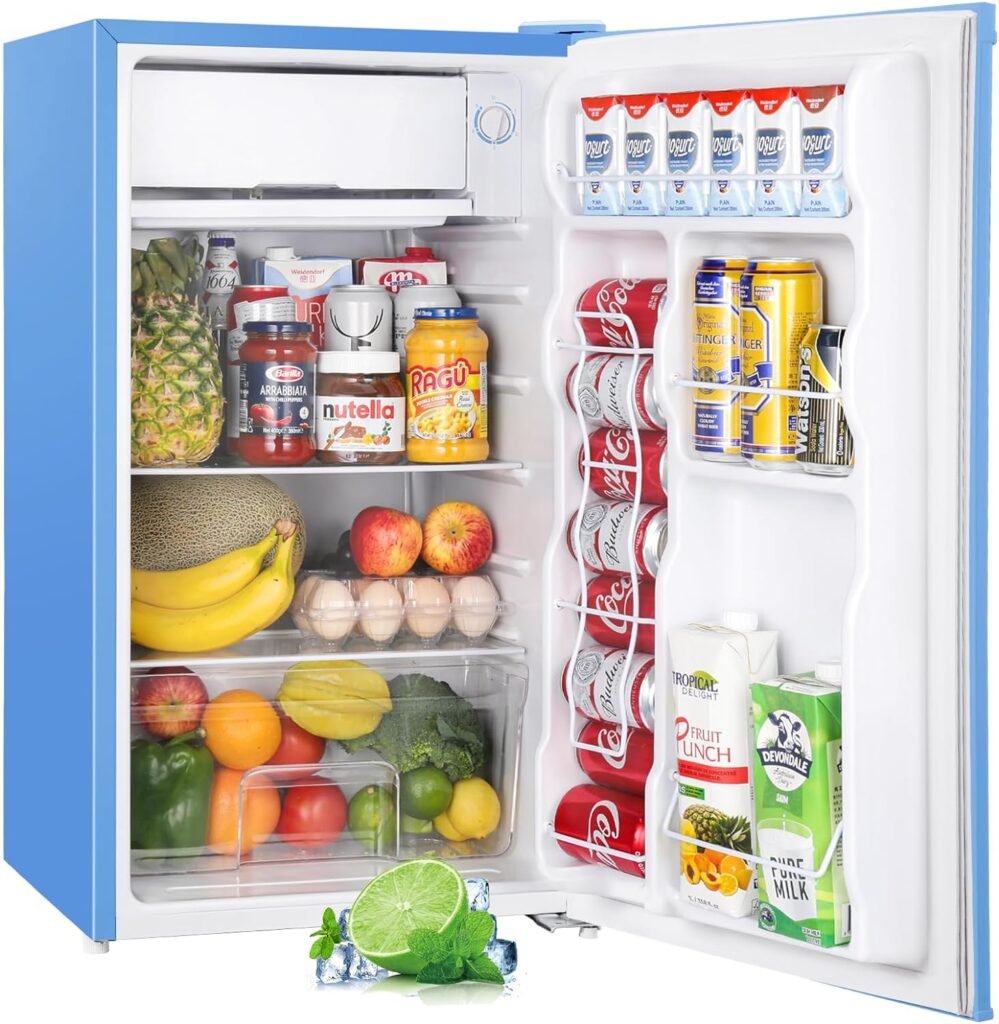In the world of home appliances, few items offer the level of convenience and versatility that a mini fridge does. Whether you’re a college student looking to keep snacks and beverages chilled in a dorm room or a professional seeking to add extra storage to your office, mini fridges are the perfect solution. In this comprehensive guide, we’ll explore everything you need to know about mini fridges, from their various types and features to tips on choosing the right one for your needs.
The Basics of Mini Fridges
Let’s start with the basics. What exactly is a mini fridge? Simply put, it’s a compact refrigerator designed to fit in small spaces, such as dorm rooms, offices, RVs, and studio apartments. Despite their smaller size, mini fridges offer many of the same features as their full-sized counterparts, including adjustable temperature settings, shelves, and storage compartments.

Types of Mini Fridges
Mini fridges come in a variety of types to suit different needs and preferences
- Compact Mini Fridges: These are the most common type of mini fridge, typically ranging in size from 1.7 to 4.5 cubic feet. They’re perfect for storing snacks, beverages, and small food items.
- Cube Mini Fridges: As the name suggests, cube mini fridges have a cube-like shape and are ideal for tight spaces. They’re great for dorm rooms, offices, and bedrooms.
- Portable Mini Fridges: These mini fridges are designed for on-the-go use and often come with features like car adapters and carrying handles. They’re perfect for road trips, camping, and outdoor events.
- Drawer Mini Fridges: Drawer mini fridges have a unique design with pull-out drawers instead of traditional shelves. They’re great for storing fruits, vegetables, and other perishable items.

Features to Consider
When choosing a mini fridge, there are several features to consider
- Size and Capacity: Consider how much space you have available and how much storage capacity you need. Mini fridges come in a range of sizes, so you’re sure to find one that fits your needs.
- Temperature Control: Look for a mini fridge with adjustable temperature settings, so you can keep your food and beverages at the perfect temperature.
- Energy Efficiency: Opt for a mini fridge with an Energy Star rating to save on energy costs and reduce your carbon footprint.
- Interior Layout: Pay attention to the interior layout of the mini fridge, including the number of shelves, storage compartments, and door racks. Choose a layout that maximizes storage space and makes it easy to organize your items.
- Noise Level: Some mini fridges can be noisy, especially when the compressor kicks in. Look for models with noise-reducing features for a quieter operation.

Benefits of Mini Fridges
Mini fridges offer a range of benefits that make them a worthwhile investment
- Convenience: With a mini fridge, you can keep snacks, beverages, and other essentials close at hand without having to trek to the kitchen.
- Space-saving: Mini fridges are perfect for small spaces where a full-sized refrigerator wouldn’t fit, such as dorm rooms, offices, and RVs.
- Versatility: Mini fridges can be used in a variety of settings, from bedrooms and offices to garages and outdoor patios.
- Energy Efficiency: Mini fridges are typically more energy-efficient than their full-sized counterparts, making them a cost-effective option for keeping your items cool.

Tips for Using and Maintaining Your Mini Fridge
To get the most out of your mini fridge, follow these tips for proper use and maintenance
- Keep it Clean: Regularly clean the interior and exterior of your mini fridge to prevent mold, mildew, and odors from developing.
- Monitor the Temperature: Use a thermometer to monitor the temperature inside your mini fridge and adjust the settings as needed to keep your items fresh.
- Don’t Overload it: Avoid overloading your mini fridge, as this can restrict airflow and prevent it from cooling properly.
- Allow for Proper Ventilation: Make sure there’s enough space around your mini fridge for proper ventilation, especially if it has a compressor-based cooling system.
- Check the Seal: Inspect the door seal regularly to ensure it’s tight and secure, as a loose seal can lead to energy loss and temperature fluctuations.

Creative Uses for Mini Fridges
In addition to their traditional uses, mini fridges can also be repurposed in creative ways
Beauty Bar: Use a mini fridge to store skincare products, cosmetics, and beauty tools for a refreshing and indulgent beauty routine.
- Home Bar: Turn your mini fridge into a home bar by stocking it with your favorite beverages, mixers, and garnishes for impromptu cocktail parties and gatherings.
- Snack Station: Create a dedicated snack station with a mini fridge stocked with healthy snacks, drinks, and treats for quick and convenient snacking.
- Medicine Cabinet: Keep medications, vitamins, and first aid supplies organized and easily accessible in a mini fridge designated for medical purposes.

Conclusion
Mini fridges are more than just compact coolers; they’re versatile appliances that offer convenience, efficiency, and flexibility. Whether you’re a student, professional, or homeowner, a mini fridge can make your life easier and more enjoyable. So why wait? Invest in a mini fridge today and experience the convenience for yourself!